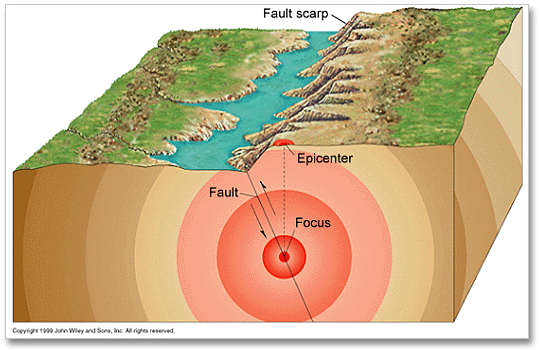
(Reference: http://earthquakesandplates.files.wordpress.com/2008/05/eqfocus.gif )
Earthquakes are most commonly found on or near plates of the earth's crust. They occur mostly along the edge of the oceanic as well as continental plates within areas of the crust where there are fractures called faults (long cracks in Earth) along which two crustal blocks have moved or slipped against each other.
The picture below shows the major fault lines in Earth.

(reference: https://wikis.glowscotland.org.uk/@api/deki/files/34976/=Tectonic_Plates.gif )
The earthquake depth range of 0 - 700 km is divided into three zones: shallow, intermediate, and deep. According to the zones, they have different impacts on places.
0 and 70 km deep- Shallow earthquakes
70 - 300 km deep- Intermediate earthquakes
300 - 700 km deep- Deep earthquakes

Global earthquake epicenters for 1980–1996
The shallower an earthquake, the more damage it can produce at the surface; intermediate and deep-focus earthquakes are rarely destructive.
This is because at greater depths, the rocks are very hot and under high pressure so they deform by flowing rather than breaking and faulting, hence having lesser impact usually.
No comments:
Post a Comment